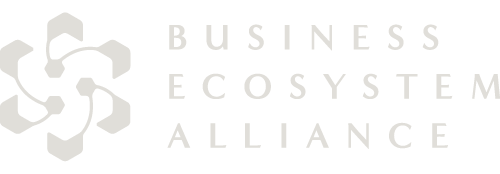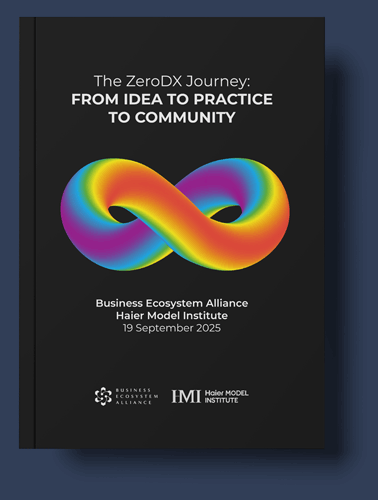

Rebirth of the Phoenix: Golden Communication Group’s Transformation Journey
Golden Communication was a winner in the Transformational category of the 2025 ZeroDX Awards announced in Beijing on 19 September 2025.
In 2023, Golden Communication Group, one of Vietnam’s most established media and communications companies, celebrated its 25th anniversary. Beneath the milestone, however, was a pressing reality. The company’s fragmented structure, spread across five subsidiaries, had bred duplication, inefficiency, and delay. For CEO Nguyễn Minh Hương, the situation was critical. She later reflected that without bold change, closure was a matter of months, not years.
The call for transformation came when Nguyễn Minh Hương encountered Teal Unicorn’s approach to Open Management. After attending their trainings, she realised this was the mindset she had long been searching for: a way to build an ethical, sustainable, human-centred organisation. Guided by Dr. Cherry Vu, Golden embarked on what employees came to call its “Rebirth of the Phoenix.”
The first step was to dissolve the five independent units, Golden Digital, Golden Event, Golden PR, Golden Screen, and Golden Ad, and unify them into One Golden. What had once been a cumbersome and disconnected system became a leaner, more agile entity. This was not just restructuring. It meant redefining the mission and strategy of the company. The shared vision became to move the world with good things, and the mission centred on growing business values through agile and human-centred solutions. By clarifying this purpose, employees could see their work not only as commercial activity but as something that built trust, created value, and contributed positively to society.
Opportunity generation shifted as well. Hackathons became a regular practice, turning the old waterfall model into a more agile and creative environment. Instead of ideas being the privilege of a small leadership group, employees across roles and levels were encouraged to explore new technologies, optimise processes, and propose new services for clients. Experimentation was normalised, and even failed attempts were treated as learning opportunities. This openness created a constant flow of opportunities that kept the company ahead in a fast-moving industry.
The new structure also changed the relationship with customers. Golden began to treat every touchpoint as an opportunity to deliver value, not only for external clients but for internal teams as well. By shortening the distance between staff and customers, employees could respond to needs in real time, personalise solutions, and build collaborative partnerships. This broke down the sense of transactions and fostered deeper trust, making the customer experience central to everyone’s role.
Leadership was transformed. The traditional model of top-down decisions gave way to coaching and mentoring. Managers no longer saw themselves as the ones with all the answers, but as facilitators of environments where others could learn and take initiative. Employees, in turn, were trusted to lead their own work, creating a flatter organisation where accountability flowed both ways.
Colleagues, once split by departments, became part of a network of small, collegial teams. Roles grew more fluid, allowing people to flow into different projects where their strengths were most needed. This flexibility encouraged collaboration and a sense of belonging that replaced the old silos.
Transparency became essential. Workflows were visualised through Kanban boards, stand-ups made priorities clear, and skills were mapped through the Shu-Ha-Ri framework of learning and mastery. Information and tools were shared openly, so decisions no longer relied on a handful of people. Training was embedded in daily work, with peer learning and experimentation creating an organisation that constantly upgraded its own skills.
Golden also redefined how it worked with partners. External collaborators were treated not as vendors but as part of an extended ecosystem. Shared tools and open processes allowed creative agencies, technology providers, and production partners to align with Golden’s values and contribute as equals to the delivery of results.
Decision-making shifted to the teams themselves. Self-managed groups were given the authority to decide on budgets, timelines, and creative approaches without waiting for approvals. Rules and processes were redesigned to support autonomy rather than restrict it, which meant that when challenges arose, teams responded with their own proposals for how best to meet them. The centre of gravity for action moved closer to where the work happened.
The results and rewards were significant. Profits grew by 80 percent, productivity by 110 percent, and revenue by 5 to 8 percent within a year of the unification. Every employee received at least three months’ additional salary, with outstanding contributors receiving up to five. These achievements were shared across the organisation rather than confined to a few, reinforcing unity and common purpose.
For Nguyễn Minh Hương, the transformation was not about survival alone. It was about redefining what Golden stands for. No longer just another media company, Golden now aspires to be a pioneering organisation where people can learn, grow, and succeed together. The “Rebirth of the Phoenix” is still ongoing, but it has already ensured that Golden Communication Group is stronger, more agile, and more sustainable than ever before.
Originally created by Corporate Rebels


